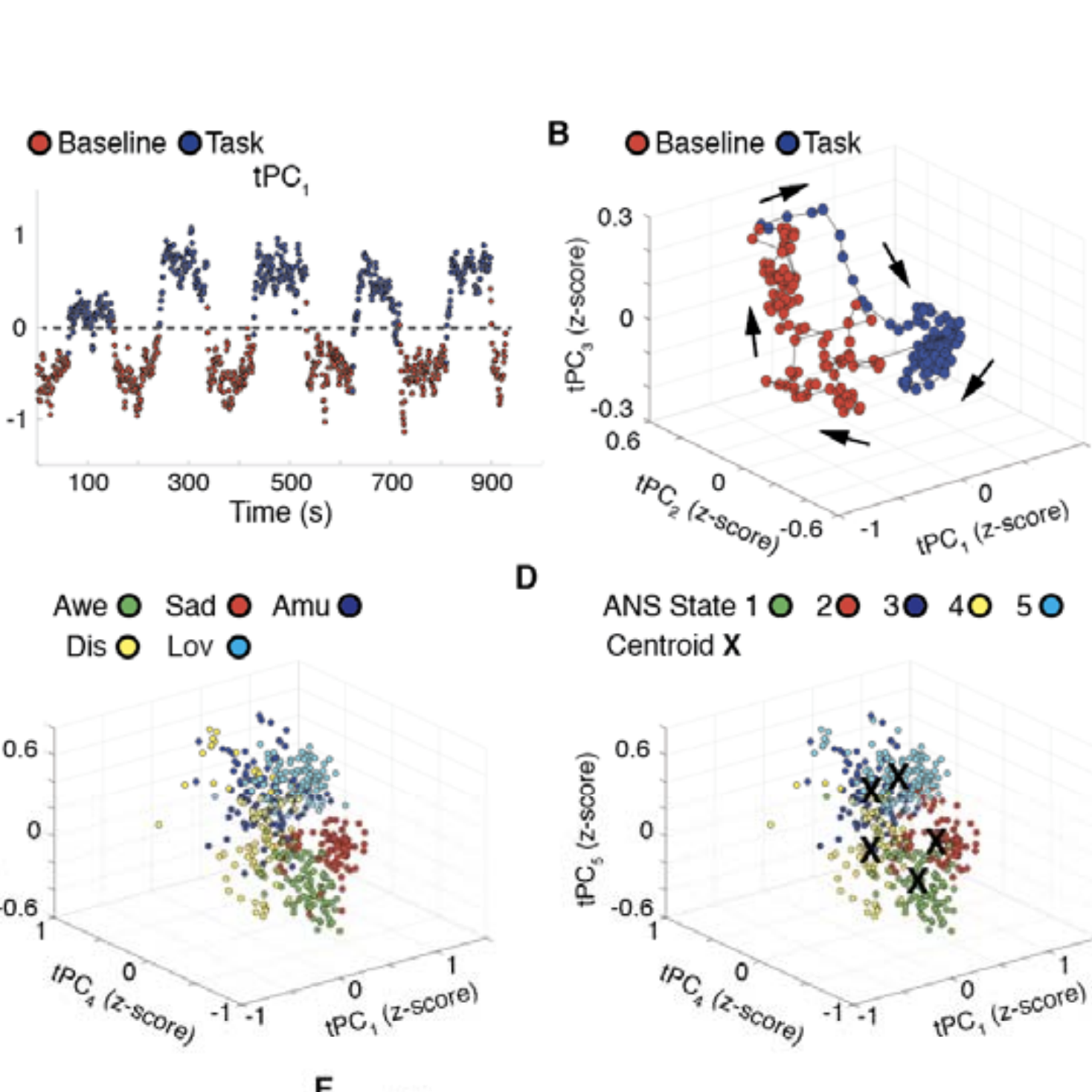Abstract
The outflow of the autonomic nervous system (ANS) is continuous and dynamic, but its functional organization is not well understood. Whether ANS patterns accompany emotions, or arise in basal physiology, remain unsettled questions in the field. Here, we searched for brief ANS patterns amidst continuous, multichannel physiological recordings in 45 healthy older adults. Participants completed an emotional reactivity task in which they viewed video clips that elicited a target emotion (awe, sadness, amusement, disgust, or nurturant love); each video clip was preceded by a pre-trial baseline period and followed by a post-trial recovery period. Participants also sat quietly for a separate 2-min resting period to assess basal physiology. Using principal components analysis and unsupervised clustering algorithms to reduce the second-by-second physiological data during the emotional reactivity task, we uncovered five ANS states. Each ANS state was characterized by a unique constellation of patterned physiological changes that differentiated among the trials of the emotional reactivity task. These ANS states emerged and dissipated over time, with each instance lasting several seconds on average. ANS states with similar structures were also detectable in the resting period but were intermittent and of smaller magnitude. Our results offer new insights into the functional organization of the ANS. By assembling short-lived, patterned changes, the ANS is equipped to generate a wide range of physiological states that accompany emotions and that contribute to the architecture of basal physiology.
